
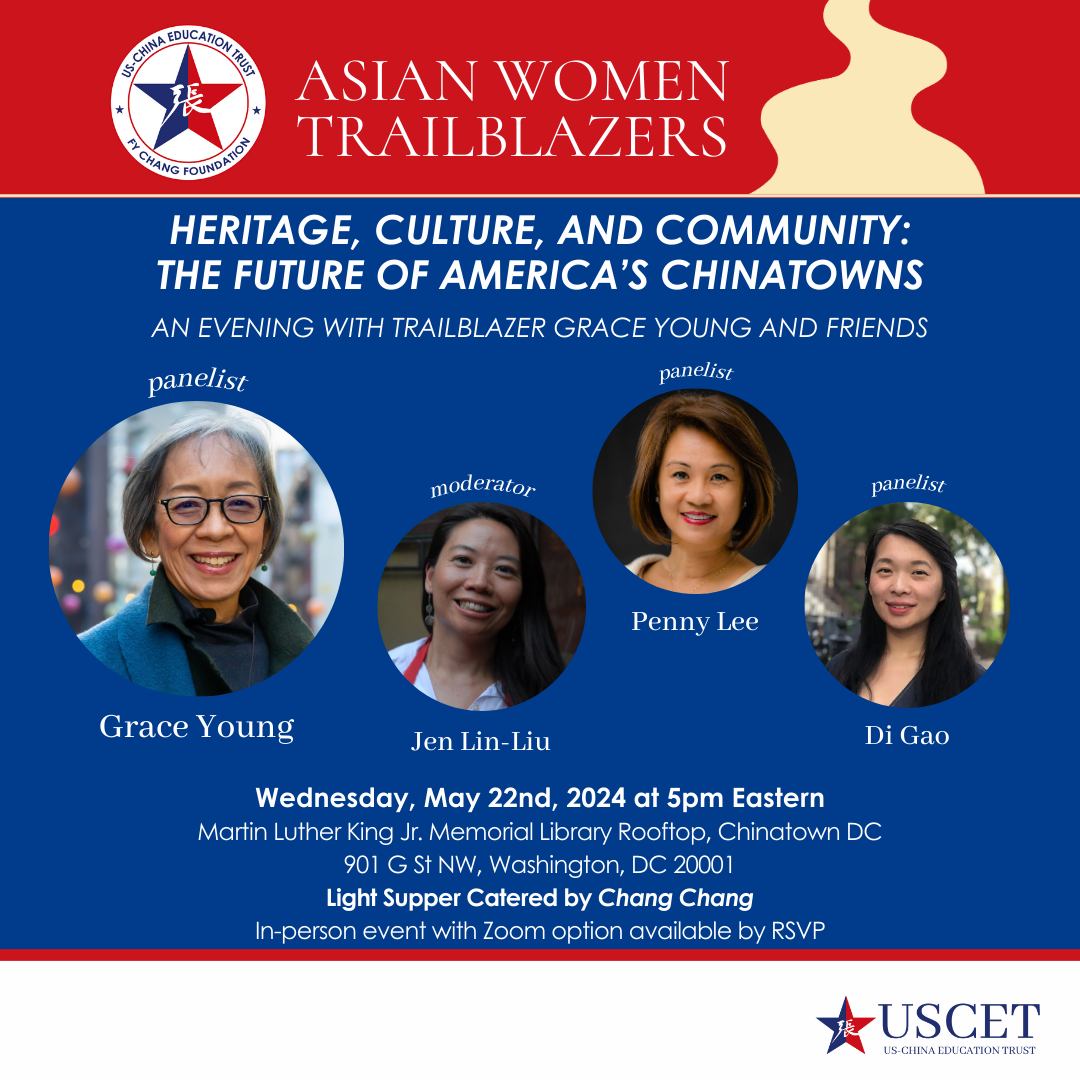
Please see links to additional Chinatown resources at the end of this summary.
To celebrate AAPI Heritage Month, the US-China Education Trust (USCET) hosted an in-person panel focused on challenges for America’s Chinatowns and ways to ensure that they remain a vital part of the Asian American community. The event, made possible by the Ruth Kuo and Rhoda How Memorial Fund and community supporters, took place at the Martin Luther King Jr. Memorial Library, located at the vibrant nexus between Washington, D.C.’s Chinatown and downtown. Discussion was lively, and it was well attended in-person and online, including leaders of the D.C. government’s Chinatown Task Force as well as other stakeholders and advocates for the preservation of Chinatowns.
Chinatown activist and culinary historian Grace Young, along with filmmaker Penny Lee and Di Gao from the National Trust for Historic Preservation, discussed their trailblazing work to promote and preserve America’s Chinatowns. Moderated by Jen Lin-Liu, a culinary author and event director at Chang Chang, a D.C. restaurant of celebrity chef Peter Chang that catered a delicious light supper enjoyed by all who participated in person and gave focus to the importance of food and restaurants to Chinatowns.
Before the discussion, USCET President Madelyn Ross thanked the staff and event supporters, while Ambassador Julia Chang Bloch, USCET’s executive chair, recognized virtual attendee Julian Suez, who created the Ruth Kuo and Rhoda How Memorial Fund in honor of his mother Rhoda How and aunt Ruth Kuo. Ambassador Bloch also gave special thanks to Madelyn Ross, who is retiring from USCET in June, calling Ross a true trailblazer herself.
The panel discussion began with personal connections to Chinatowns. Grace Young recounted how her father took her around San Francisco’s Chinatown in her youth, and the memorable sense of community and warm, small-town feeling that those visits instilled. Her sense of closeness to Chinatown was further strengthened after she moved to New York City, where she continued to frequent Chinatown’s businesses. But the pandemic upended her view of the role of Chinatowns in her life. “During the pandemic, I realized that I’d taken Chinatown for granted,” Young said. “I assumed that Chinatown would always be a part of my life. And when I saw many old legacy businesses disappear in those first months of COVID, I realized that if we didn’t all step up and protect Chinatown, we could lose it.”
On the eve of the COVID lockdown, Young and a videographer visited New York City’s Chinatown and filmed Coronavirus: Chinatown Stories. By then, Chinatown had turned into a ghost town with empty streets and closed businesses, and Grace Young vividly recorded the struggles of restaurant owners in Chinatown forced to close, capturing on camera emotional moments such as a restaurant owner weeping.
For Di Gao, the senior director of research and development at the National Trust, her connection with Chinatown helped shape her identity and was the reason she started her current career. At the event, Gao introduced the National Trust’s America’s Chinatowns Project, including a list was assembled of endangered historical Chinatowns and ways to preserve their presence.
Penny Lee, a documentary producer and director, began making Chinatown documentaries over a decade ago. One of her most notable works, A Tale of Three Chinatowns examines Chinatowns in D.C., Boston, and Chicago. Lee noted the pressures facing Chinatowns, such as the displacement of residents due to development, a point strongly echoed by other panelists. Gao pointed towards the threats from large-scale development that Philadelphia and Seattle Chinatown are facing today, which the Trust highlighted through its 11 Most Endangered Historic Places campaign. Chinatowns all over the country often were forced to move due to development pressure… or eminent domain. We’re seeing this pattern continue to this day, where living Chinatowns that are still functioning as thriving neighborhoods continue to have to fight to remain in place and continue to fight for their existence,” said Gao.
One of the highlights of the event was when moderator Jen Lin-Liu asked the panelists to share their thoughts on the popularly held view that the disappearance of Chinatowns is a sign of immigrants achieving the American dream. Lin-Liu explained that while Asian immigrants may start out in Chinatown, they move to the suburbs once they achieve more financial stability and thus the decline of Chinatowns indicates the “moving-up” of Asian immigrants.
In her response, Gao flipped the question and reaffirmed the positive role of Chinatowns to many immigrants. She stated that her father had an office in Seattle’s Chinatown while she was growing up, and although he no longer works there, its significance remained unchanged. Chinatowns are important because, she explained, it is a place that made the American dream possible for people such as her family when they “are often excluded from the mainstream economy” due to language and other barriers. She further elaborated by saying, “We are seeing a resurgence with newer generations like myself that feel this kinship and intense sense of belonging in Chinatown” and that newer generations are seeking in Chinatown a “community that you can’t find anywhere else.”
Lee added that while Asian immigrants find work outside of Chinatown, many still live and work there. She emphasized the inseparable link between Chinatown and older Chinese Americans, as well as the convenience and joy it brings to their lives. Additionally, Young stressed that many people, especially small business owners, still rely on Chinatown for their livelihood, making the support of these communities crucial.
“For me, Chinatowns embody culture, history, and tradition. But most of all, they are a reflection of America’s diversity. They tell the American story,” said Grace Young. She added that New York City’s Chinatown was also the place where other early immigrants like the Irish, Italians, Jews, and Germans once lived. “So, when you’re in Chinatown, you are actually witnessing the American story,” said Young.
Participants went home with a sense of renewed purpose and knowledge about the state of America’s Chinatowns, while USCET’s new Heritage, Culture, and Community series offers a platform to do more.
RESOURCES
The panel spoke about several current initiatives focusing on the fate of Chinatowns in America, as well as related videos, photos and film resources. Below are links to several important projects and resources mentioned during the discussion and afterward:
- The National Trust for Historic Preservation is devoting resources to its America’s Chinatown Project. It has just launched a new storytelling collection in partnership with Google Arts and Culture – Welcome to America’s Chinatowns. The site features stories of communities, advocates, and institutions supporting Chinatowns across the country.
- Activist and “stir fry guru” Grace Young began to focus on the plight of New York’s Chinatown during the pandemic. On the eve of the COVID lockdown, Young and videographer Dan Ahn visited New York City’s Chinatown and filmed a video series that documents the impact of COVID on Chinatown businesses. Ahn vividly recorded the struggles of restaurant owners and Young created moving descriptions. The short videos are on the Poster House museum’s website, Coronavirus: Chinatown Stories. Her efforts to give voice to the people of Chinatown have earned her a James Beard Humanitarian of the Year Award.
- Documentary filmmaker Penny Lee produced a 90-minute documentary film called A Tale of Three Chinatowns. It focuses on the Chinatowns of Boston, D.C., and Chicago, and is available for a small rental fee on Amazon Prime, or for supporters of PBS here.
- In partnership with the 1882 Foundation, Penny Lee produced a series of short films on DC’s Chinatown. These films, each 3-10 minutes long, provide a glimpse of what it was like to grow up in D.C.’s Chinatown from the 1950s onwards and how the community has shrunk because of forces like gentrification and race relations.
- Penny Lee has also assembled 73 photos of DC Chinatown (1950s to 1990s) showing buildings, restaurants, stores, as well as people shopping, gathering, playing, and hanging out. Photos are mostly prior to the Chinatown arch and the Gallery Place metro arena. (photo credits: Hubert Wah Yee, the Chin Family, Chinese Community Church, and the Historical Society of Washington DC).
- The Washington DC Government has launched a Gallery Place/Chinatown Task Force. More information and a detailed PowerPoint about their work can be found here.
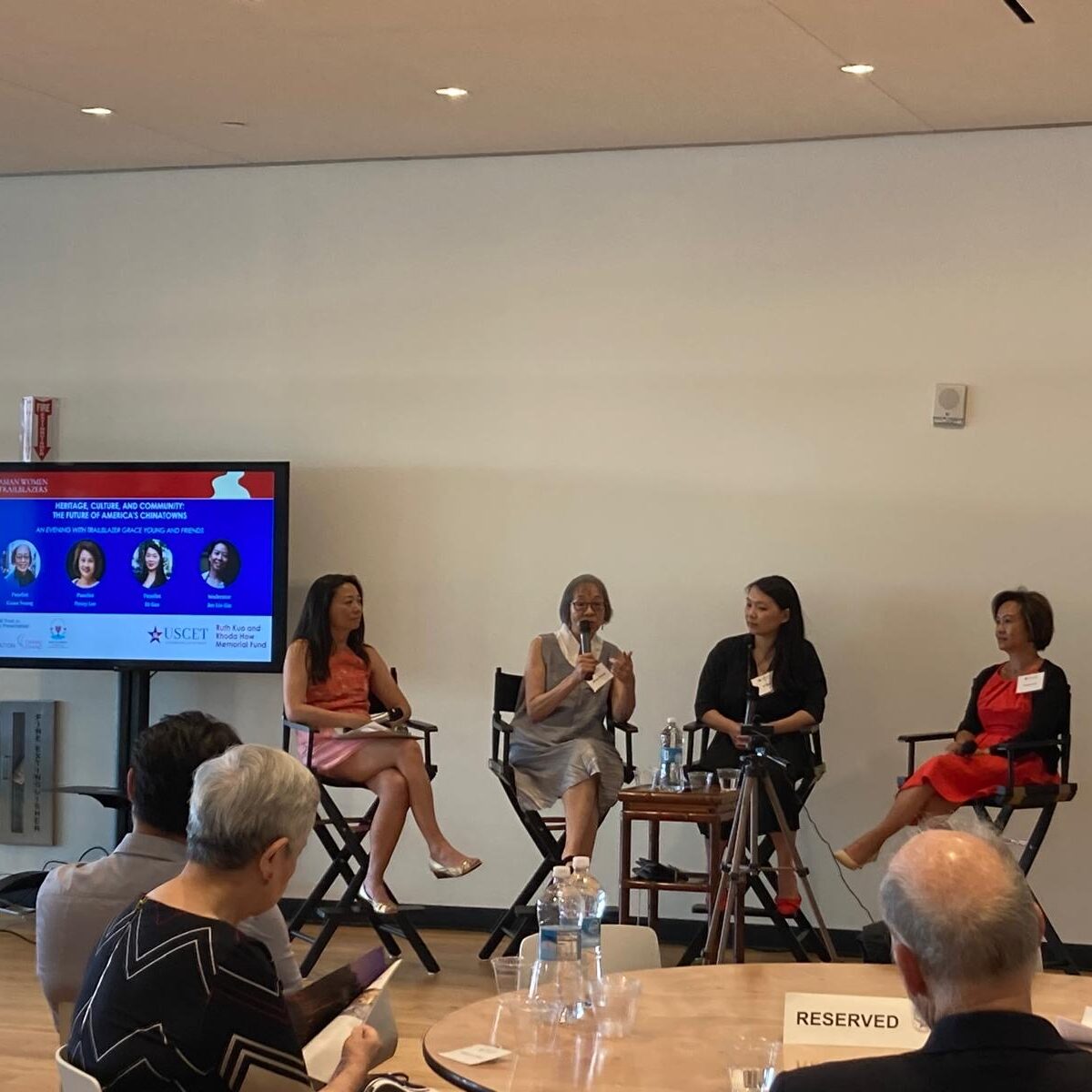
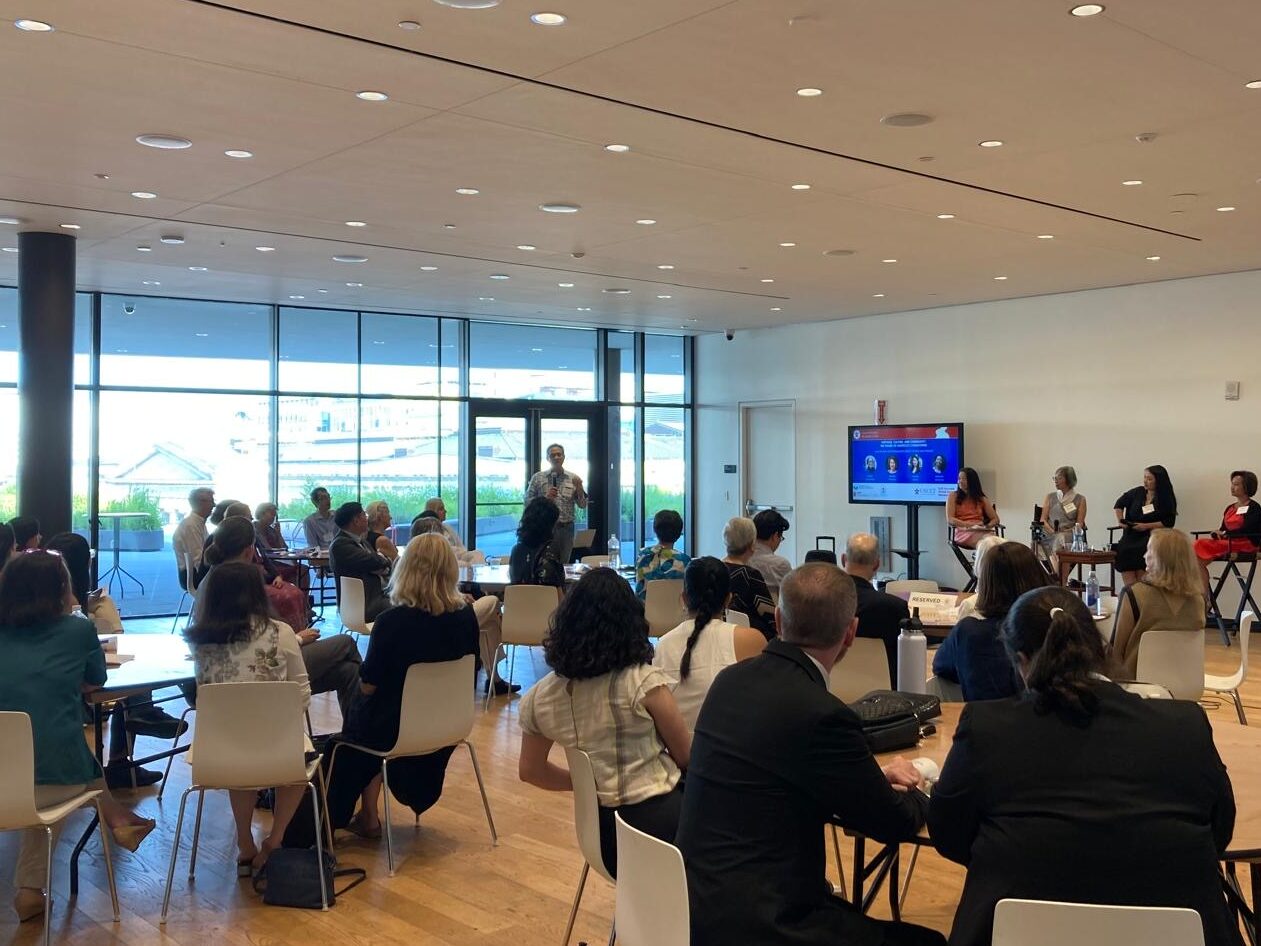
Panelists
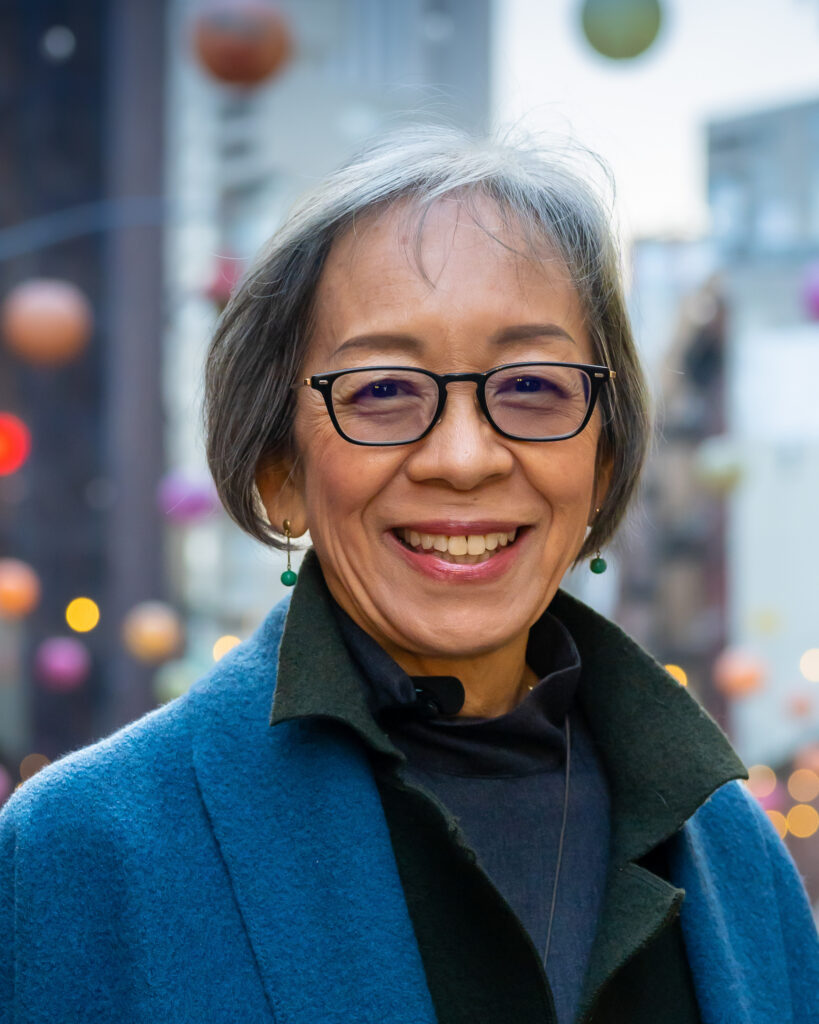
Grace Young is an award-winning cookbook author, culinary historian, and activist working to save and support America’s Chinatowns. She is a 2023 Forbes 50 Over 50 honoree and is the 2022 recipient of the Julia Child Award. She received the James Beard Foundation’s Humanitarian of the Year Award in 2022 and is a USA Today Women of the Year honoree for her Chinatown advocacy. Dubbed the “accidental voice for Chinatown” by Grub Street, Grace has been featured on CBS Mornings, Today Show, PBS Newshour, and NPR’s All Things Considered. She has also been profiled by The Wall Street Journal, Washington Post, Smithsonian, Vogue and Cherry Bombe. Her accolades include James Beard Awards for her Wok Therapist comedy video and cookbook Stir-Frying to the Sky’s Edge. She is currently partnering with the James Beard Foundation on the #SupportChinatowns social media campaign to raise public awareness to preserve and protect America’s Chinatowns.
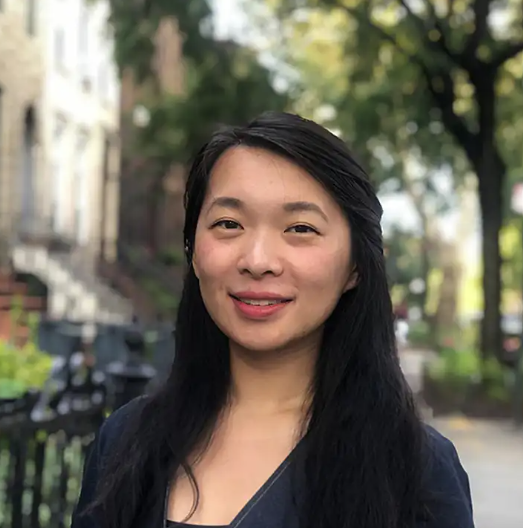
Di Gao serves as the senior director of research and development, leading a team that provides technical and analytical support to strategic initiatives across the National Trust. Di is responsible for developing new preservation initiatives including the America’s Chinatowns program, supporting project execution across various preservation initiatives, conducting feasibility analysis and business planning, helping to grow the organization’s GIS practice, and identifying growth areas for the National Trust. Di’s work is currently focused on the intersection of preservation and equity, inclusion, and social justice, and mobilizing preservation action to better support America’s Chinatowns and other APIA ethnic enclaves.

Penny Lee is a documentary producer, director, and film editor in television and film. Her passion for storytelling has driven her to create content highlighting the immigrant experience in the US, with a primary focus on Chinese American voices. Penny co-produced and edited the award-winning feature-length documentary “A Tale of Three Chinatowns,” examining Chinatowns in Washington, DC, Boston, and Chicago, which is available on Amazon Prime Video. She produced and directed a short documentary called “Through Chinatown’s Eyes: April 1968,” about the civil disturbance and street violence following the assassination of civil rights leader Dr. Martin Luther King, Jr and its impact, especially on DC’s Chinatown. Penny also produced an oral history series in partnership with the 1882 Foundation called Flashback Chinatown DC that showcase the voices of Chinatown residents to tell stories about family, immigration, and growing up in DC Chinatown. Penny is a local resident in the DMV.
Moderator
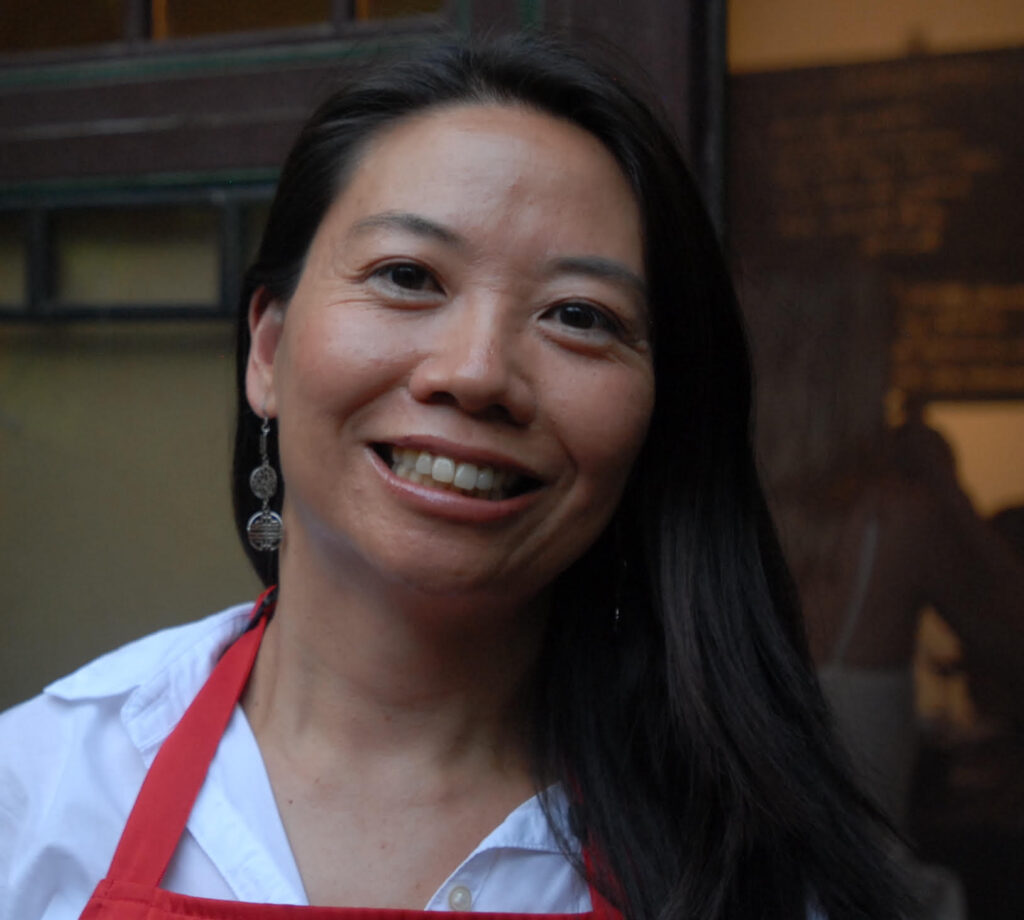
Jen Lin-Liu was born in Chicago and grew up in Southern California. She is the author of the forthcoming FORMIDABLE MRS. CHAO: The Story of China’s Julia Child. She has written two culinary memoirs, SERVE THE PEOPLE: A Stir-Fried Journey through China and ON THE NOODLE ROAD: From Beijing to Rome with Love and Pasta. She is the events director and a culinary consultant for Chang Chang, a restaurant in Washington D.C. by Peter Chang. Jen developed a lifelong passion and career in Chinese cuisine after receiving a Fulbright Fellowship to China in 2000. She has written for The New York Times, Newsweek, The Economist, and Saveur. In 2008, she founded a cooking school in Beijing called Black Sesame Kitchen. Jen is married to Craig Simons, an author and diplomat. They have lived with their two children in Chengdu, China and Havana, Cuba, and Beijing, China. They now make their home in Washington D.C.
